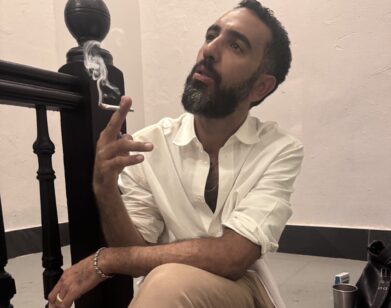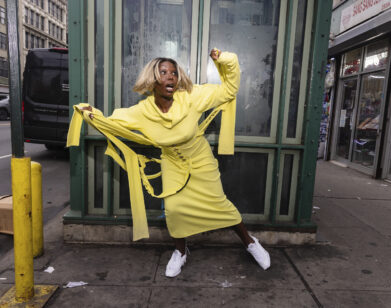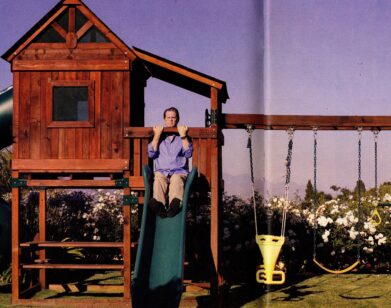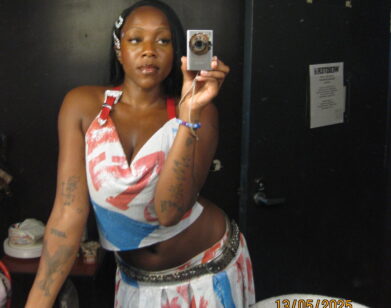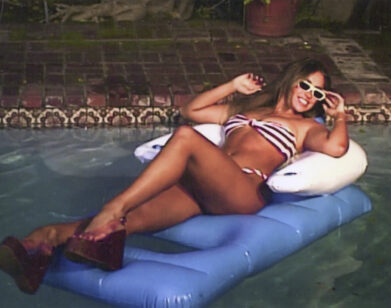Cosey Fanni Tutti Reflects On Five Decades Exploring the Taboos of Western Society
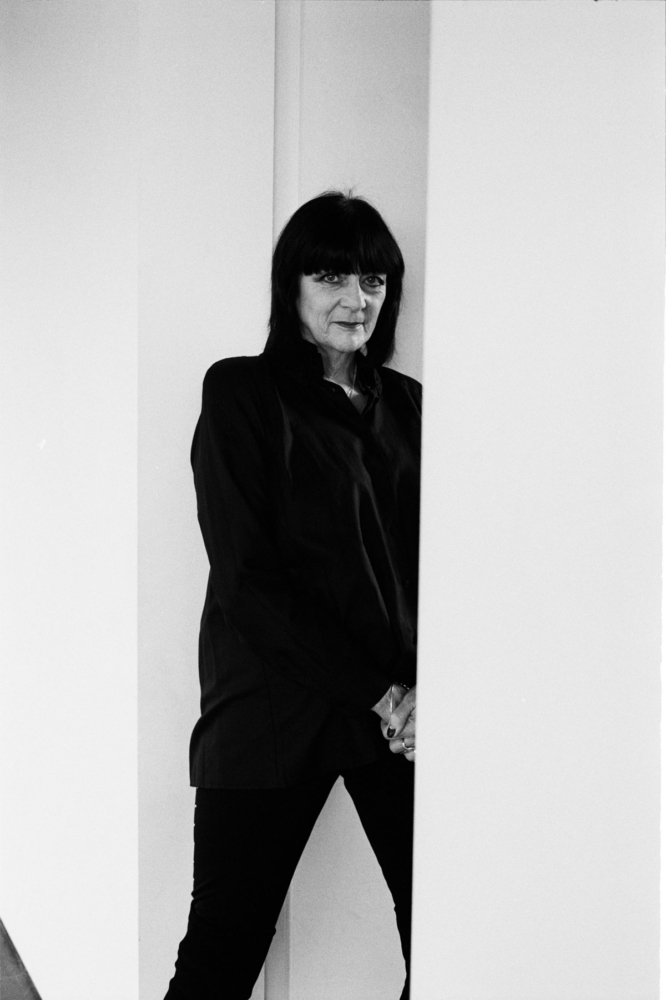
Christine Carol Newby was born in Hull, England, in 1951. At 17, around the time she started dating a young avant-garde artist and occultist who called himself Genesis P-Orridge, her father threw her out of the house. The pair moved into a former fruit warehouse by the town docks known as the Ho Ho Funhouse. P-Orridge renamed Newby, his lover and creative bedfellow, “Cosmosis,” which was soon shortened into “Cosey.” Together, they explored ad hoc art performances (sometimes involving live sex), “actions,” and mail art, forming the collective COUM Transmissions, which, at one time, had as many as eight members. In 1973, the artist Robin Klassnik addressed Newby in a letter as “Cosey Fanni Tutti”— a nod to Mozart’s 18th-century opera Così fan tutte, which roughly translates into English as “so do all women”— and the name stuck. Cosey Fanni Tutti would go on to become a full-fledged revolutionary and polyphonic creative dynamo. She would also go on to become the financial backbone of her co-conspirators by working as both a pornographic model and a striptease dancer, creating magazine photos that she would re-contextualize as artwork.
In 1976, the Institute of Contemporary Arts in London mounted “Prostitution,” the controversial COUM exhibition, which included porn photos and performances with props such as bloody tampons, that sent the British media into a censorious frenzy. One conservative MP even labeled Tutti and P-Orridge “wreckers of civilization.” That show also marked the official debut of Throbbing Gristle, the experimental, industrial band formed by Tutti and P-Orridge, as well as the electronic whiz Chris Carter and artist/graphic designer Peter “Sleazy” Christopherson. The group became known for using a variety of existing recordings to create its synth sound, layered with improvised onstage performances that prodded the establishment and its politics. The band dissolved in 1981. Carter and Tutti, having fallen in love, eventually became partners in music as well, as Chris & Cosey, then Carter Tutti, and later Carter Tutti Void.
Tutti, now 67, lives in the English countryside, where she continues to make art and music. After the release of her 2017 autobiography, Art Sex Music, there’s been a fresh wave of interest in her work. That same year, she returned to Hull for a special exhibition and performance. The soundtrack she created for the event evolved into her new album, this spring’s Tutti, a soundscape self-portrait of eight tracks with names such as “Drone” and “Sophic Ripple.” (It is her first solo release since 1982.) On an early morning this past December, I traveled to Norfolk by train. Tutti picked me up from the station and drove me to her home and studio, a converted schoolhouse, where we sat at the kitchen table drinking tea.
———
STEPHANIE LACAVA: You begin your recent autobiography with stories of Hull, the port city in East Yorkshire where you grew up. At the book’s end, you’re preparing to return there for a live concert. What was Hull like when you were a kid?
COSEY FANNI TUTTI: Well, I lived on the outskirts. I didn’t see much of it until I was going out to gigs or if I went into town with my parents shopping. We lived on an estate, which was built after the war because so many homes had been bombed out. We had loads of people on the street, all different professionals and a real mix of religions and occupations. The war demolished the class system in a way, which was a beneficial thing, especially for me. My mother was a professional [in accounting] and my father was in the fire brigade. We had neighbors who worked on the docks and in the factories. There was still that kind of atmosphere of everyone getting back on their feet. We were all trying to make life good again after what had happened.
LACAVA: How would you relate this sense of coming together to the present moment?
TUTTI: These are really scary times, because it is as if everyone is fiddling while Rome burns — not even Rome but the world. But there is also positive energy, almost as a result of great suffering. Some people connect with that today and want to put it right, and other people aren’t even aware of it because they’re so wrapped up in their own reality.
LACAVA: Do you ever think you could have stayed in Hull?
TUTTI: No, I wasn’t content to have that as the rest of my life.
LACAVA: You moved out of your family home and into the “Funhouse.” You worked for a while in a car-parts factory and as a secretary in a dress factory, before getting into stripping and nude modeling.
TUTTI: That just happened gradually. It evolved from doing mail art and collaging sex imagery, and then coming into contact with friends working on photography. Greg Taylor [Foxtrot Echo, a member of COUM] was going to submit some photographs to a competition in a sex magazine. He came ’round and said, “How do you feel about doing some nude photographs?” We were all into sex magic and stuff like that — sex was always on the agenda. So it wasn’t a big shift for someone to say that to me. Gen [P-Orridge] was all up for it. And I thought, “Yeah, that’s quite interesting.” I did it, but they got rejected because they were a bit weird.

Tutti’s “Woman’s Roll,” an action at London’s A.I.R Gallery from 1976, prior to her first public performance with Throbbing Gristle. The piece involved nudity, body movement, and a range of found objects including eggs, fur, and feathers.
LACAVA: These were the photos from 1972 for the Men Only magazine competition that involved you naked with gold cellophane, glitter, and a bed of ribbon — a mise en scène with COUM members dressed as a nurse, a clown, and a mad scientist. Did you think of them at the time as works of art?
TUTTI: Being regarded as subversive came later. I mean, I knew I was doing something that I shouldn’t be doing with the magazine people. I was aware of that. But for me, doing those kinds of things that people call transgressive, I was following my own instincts. And, of course, yeah, it was art. There were certain points where maybe they’d just stop using me if they found out I was treating it that way. I knew I had to be just like all the other models, so I went in right and worked just as all the other girls did.
LACAVA: Were the other models skeptical of you?
TUTTI: No, no. I didn’t go in with the attitude of an artist, or any kind of criteria of what I would or wouldn’t do. It was also a way for me to explore what the industry was doing to my own sexuality, because it was a whole world that more or less dictated what good sex was. And that was quite an interesting area for me, because the sex I had was quite different to what they were promoting.
LACAVA: In what way?
TUTTI: I was involved with sex magic, that kind of thing, and back then, they didn’t do that. There was nothing like that around in the mainstream sex magazines.
LACAVA: Were you ever approached to have sex on set?
TUTTI: Oh yeah, all the time.
LACAVA: And you always said no? [Tutti nods] How was that received?
TUTTI: Some didn’t care. Others would get really pissed off. The shoot would end prematurely and I knew that the photographs would be shit because the rapport between us had broken down. It was like I knew what they were after and I wasn’t going to play along. And I never worked for them again. They wouldn’t have me again, because they would rather someone who would do what they wanted.
LACAVA: Did you find it difficult to tell women around you about the sex work?
TUTTI: No. I didn’t go out for coffees and teas and all that, because I was too bloody busy to socialize. Many of the women I was with I knew them from doing the magazine work, in which case we very rarely talked about it, either because we’d talk about other things or because it was just what we did.
LACAVA: Did you ever resent bringing home the money to help pay for everything while everyone else was busy with COUM or music?
TUTTI: Yeah, I did. And when I’d mention it, the money was torn up in my face. I was told it was meaningless. Well, obviously it wasn’t fucking meaningless, otherwise I wouldn’t have been working and things wouldn’t have happened.
LACAVA: How did COUM evolve over the years?
TUTTI: COUM changed so much from the start to when we moved to London in 1973. Once I started doing the sex work, it got quite heavy for COUM. We were still presenting very colorful, prankster scenarios and actions up until we did “The COUMing of Age” at the Oval House Theatre. This performance was the first COUM live action that involved nudity. It was a mix of twisted sexual fantasies and clichés presented in front of an audience. We decided to do different pastiches, little twee sex situations, like me on the swing hung in the center of the theater’s ceiling, but with the twist of me urinating through a heart shaped hole over the audience. We literally had a metal cage with me as the model in the middle, and Foxtrot taking photographs, playing off our roles in the pornographic shoots. And then we took that show to Amsterdam, which is far more liberal, and we went into the S&M area of sex. When we came back from that, things changed again. It went more black and white, basically. [The actions moved away from colorful costumes and scenarios and became even more visceral, sometimes involving blood-letting.]
LACAVA: Do you have any memory of the pushback from society or law enforcement?
TUTTI: Early on in COUM, our actions on the street didn’t make any kind of sense so people couldn’t make sense out of them. They were confused. They’d say, “This is rubbish. What are you doing?” They’d attack us. And the police would move us on. We were disrupting the town.
LACAVA: Were you ever put in jail?
TUTTI: I was in jail at 19 for shoplifting when I didn’t know we were shoplifting. There was a thing called “liberation,” which was basically just stealing. “Liberating” items is what hippies called it. A guy I lived with used to “liberate” quite often. I had no idea! [Laughs] I was in jail for that.
LACAVA: Were you a hippie back then? Today, that word doesn’t seem as radical as it might have been at the time.
TUTTI: There were always levels of being a hippie. You could be a weekend hippie, just like you could be a weekend punk, where you live at home and are only radical on the weekends. And then there were the hippies, committed to an alternative lifestyle, who lived almost in poverty, got stoned all the time, and made their own clothes. COUM was in that category. But the world has changed so much now, because it’s so connected. Back then, you could almost live without being part of the system.
LACAVA: You don’t think it’s possible to be radical in that way anymore?
TUTTI: No, it’s not possible now. Everything’s been swallowed up, and money has taken over completely. Money is just a religion, really, along with all the others. Every avenue for being creative without being rich has been closed down. People now have to move out of the cities and do it where they can afford to do it, rather like in the ’70s when there were squats. Now you really have to go outside of the system in order to do that. And the system makes it so that it’s nearly impossible not to join it in order to survive.
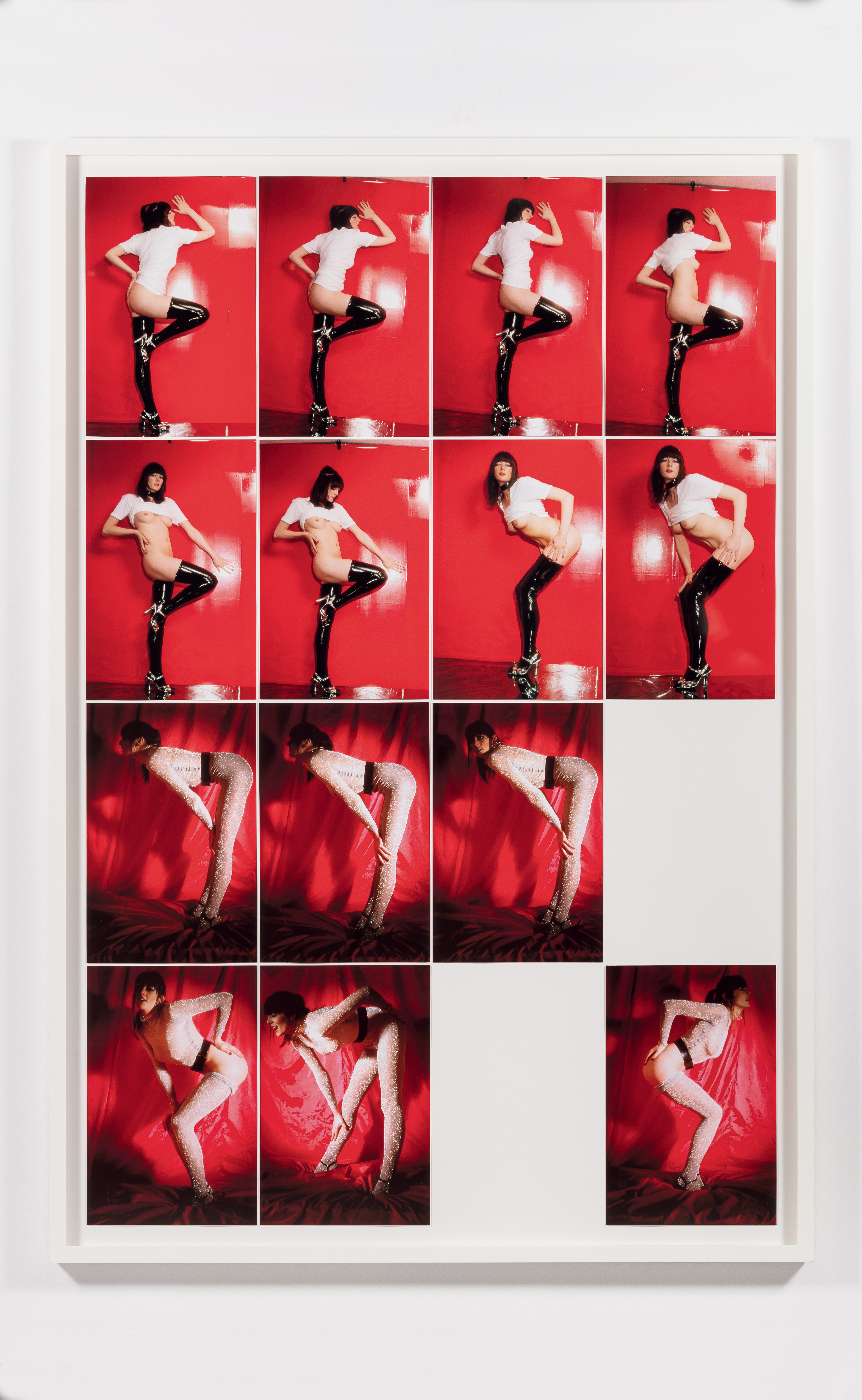
The standing pose sequence from Cosey Fanni Tutti’s “Szabo Sessions” (2017), a four-part series of images taken by the photographer Laszlo Szabo in 1979.
LACAVA: Let’s talk about Throbbing Gristle. For both this band and COUM, you’d incorporate questionable motifs [Foxtrot dressed as an SS officer for a concert performance] in order to subvert them. Tell me how you came up with the insignia for Throbbing Gristle, the triple stripe: black, red, and black with the white lightning bolt cutting through in the middle.
TUTTI: The fascist insignia and the bolt was about approaching and researching the history of how societies and cultures have been manipulated. It’s about the turning around of something that’s quite beautiful into something that completely isn’t. We were really interested in the power that symbols can have, along with control systems and graphic design. This kind of thing was all surfacing in the 1960s and ’70s, mainly because people’s parents had been involved in the Second World War and had been victims of Nazism and all this horrendous manipulation and mutilation. People were trying to understand how human beings could get to the point where they can dehumanize others.
LACAVA: But why would you choose symbols that reference hatred, even obliquely?
TUTTI: Throbbing Gristle was a mixture of things. It was the colors of anarchy, which were becoming really big at the time. It all fed into our way of addressing situations that were of concern to us, and events that were consistently shoved under the carpet, as if they’d never happened. We’d meet people from all over Europe when we’d go around doing our art actions who didn’t understand the hatred that they were facing — like German artists whose education as children purposely didn’t include what Hitler had done. That fed into the control thing, like trying to hide the truth. It’s a little bit like what’s going on now, too. People are always saying, “Well, that was so long ago. What do you want to talk about that for?” It was a similar situation in the ’70s. You’re drawing attention to something that needs attention so that you can address it and make sure it doesn’t happen again.
LACAVA: For a long time, you chose to work in groups or collectives. Why was that?
TUTTI: I love people. I think there’s power in people being together. I accept that we’re all on this planet together, and we can be creative together. If you’re creative together, you can present ideas and alternative thoughts on life.
LACAVA: Do you think there is any connecting or unifying force today that works?
TUTTI: Yes, music. We can do it through music. And video and film, with its emotional expression of human experience. That’s the opposite of shouting on social media and not actually landing in reality in any way. I don’t think people understand how serious all this is, and the damage it’s doing.
LACAVA: Your new album is influenced by your childhood in Hull. Why did you decide to revisit your past like that?
TUTTI: Things present themselves at the right time. I was working on my book and an exhibition [COUM Transmissions show at Humber Street Gallery in Hull]. I knew I wanted the visuals for that to represent the formation of myself from birth to being a child and where I went after. The music for the performance I did had to match that tone. I took samples of sounds from as far back as I could go, from all the things I’d recorded, and I manipulated them to use them as rhythms or notes for melodies. Then I included my guitar, my coronet, the harmonica, and my voice. It was the soundtrack to the visuals, and then for the album I reworked it. The process is a lot like my “magazine actions.” I’m constantly revisiting and reworking material, because they mean something different as I go along.
LACAVA: You’ve been making art for nearly 50 years now. How do you keep the emotion and heart of the work pure? How do you avoid the trap of the market?
TUTTI: All along, we’ve managed to make a living and continue doing our art without compromise. We’ve always had a kind of built-in resistance.
———
Special Thanks: Cabinet Gallery.

